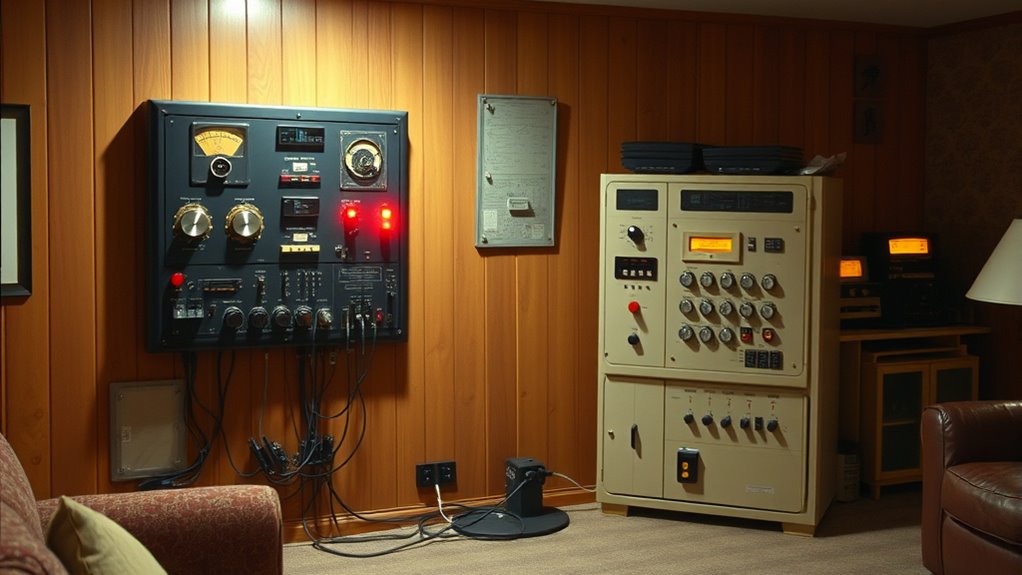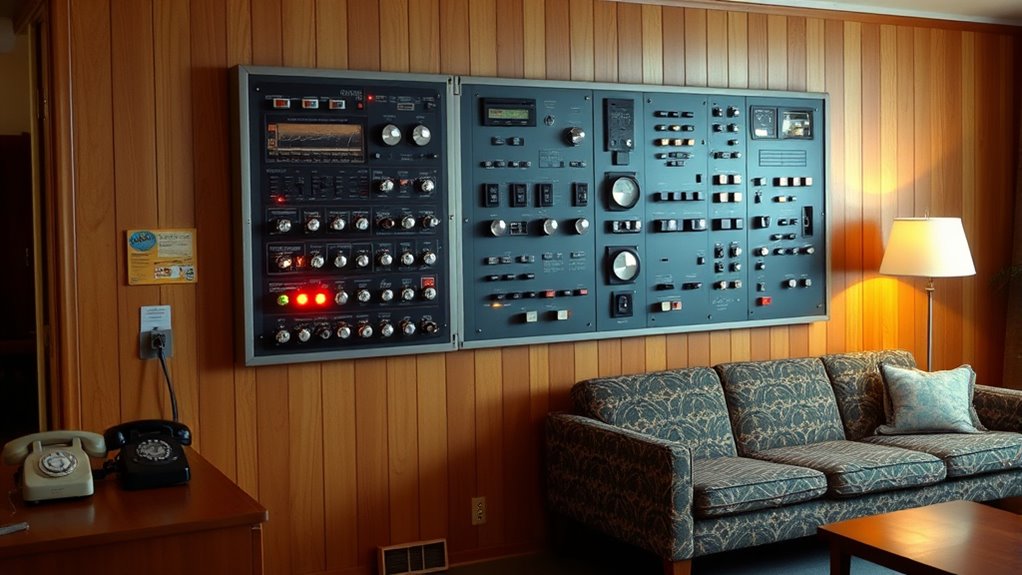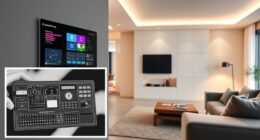In the 1970s, PLC technology revolutionized home automation by enabling you to control systems remotely through existing electrical wiring. It allowed homeowners to manage lighting, appliances, and security more conveniently and efficiently. This innovation reduced the need for complex wiring, making automation more accessible and affordable. These early developments laid the foundation for today’s smart homes. To discover how these pioneering ideas evolved, keep exploring the fascinating history of home automation and PLC advancements.
Key Takeaways
- The 1970s saw the emergence of PLC technology, enabling control of home devices via existing electrical wiring.
- Home automation focused on improving efficiency, with PLC systems simplifying device management and integration.
- Early innovations facilitated remote control and programmable routines, enhancing user convenience and customization.
- PLC technology contributed to energy savings by allowing automation of lighting, appliances, and security systems.
- These foundational developments in the 1970s set the stage for today’s advanced smart home systems.

Have you ever wondered how your home can become smarter and more efficient? With advancements in technology, especially from the 1970s, home automation has taken significant leaps forward. One of the key innovations that paved the way for modern smart homes is PLC technology—power line communication. This approach allows you to control various devices using your existing electrical wiring, eliminating the need for additional wiring or complex setups. Imagine being able to operate your lighting, appliances, or security systems from a single remote control or smartphone app, all through the same electrical network. This not only simplifies the way you manage your home but also enhances energy efficiency, helping you reduce unnecessary energy consumption and lower your utility bills.
PLC technology was revolutionary because it provided a reliable, cost-effective way to automate home systems. Instead of installing separate wiring for each device, you could leverage the existing electrical infrastructure, making upgrades more accessible and less disruptive. This meant that early adopters could easily integrate lighting controls, thermostats, or even irrigation systems into a cohesive network. With remote control capabilities, you gained the convenience of managing your home’s functions from anywhere within your property, or even remotely via early forms of networking. This level of control made it easier to turn off unused appliances or adjust lighting when you’re not at home, directly contributing to better energy efficiency. These innovations helped homeowners become more conscious of their energy use, leading to savings and a smaller carbon footprint.
PLC technology enabled cost-effective home automation by leveraging existing wiring and offering remote management, boosting energy efficiency and convenience.
Furthermore, the use of PLC technology in home automation fostered a new level of customization. You could program specific routines—such as dimming lights at a certain time or activating security systems when you’re away—without needing complex wiring or manual intervention. The remote control interface simplified the user experience, making automation accessible even for those without technical expertise. Additionally, the development of wide frequency ranges in PLC technology allowed for more reliable data transmission across different electrical environments, further expanding the potential applications and robustness of home automation systems. The remote control interface simplified the user experience, making automation accessible even for those without technical expertise. As a result, homes became not only more energy-efficient but also more comfortable and secure. The ability to monitor and control devices remotely meant that you could prevent waste and optimize energy consumption, an essential feature that continues to evolve today.
In essence, the innovations from the 1970s laid a solid foundation for today’s smart homes. The integration of PLC technology and remote control capabilities transformed how we think about energy efficiency and home management, making automation more practical, affordable, and effective. This era marked the beginning of a new way to interact with our living spaces—one that balances convenience with sustainability, all thanks to those pioneering developments in home automation technology.
Frequently Asked Questions
How Did PLC Technology Influence Modern Smart Home Devices?
PLC technology revolutionized modern smart home devices by enabling seamless wireless integration and improved user interfaces. You can now control your home’s lighting, climate, and security remotely, thanks to PLC-driven automation systems. These innovations make it easier for you to customize and monitor your environment, creating a more efficient and convenient living space. The foundation laid by PLC technology continues to evolve, shaping the smart home experience you enjoy today.
What Were the Main Challenges Faced During 1970S PLC Development?
Did you know that in the 1970s, developing PLCs faced over 50% failure rates? You’d find that the main challenges included creating reliable industrial automation systems and establishing effective digital communication. Engineers struggled with limited computing power, high costs, and standardization issues. These hurdles slowed progress but ultimately pushed innovation, leading to more robust and adaptable PLCs that transformed automation and home technology today.
Which Companies Pioneered Early Home Automation Using PLCS?
You’d find that early companies like General Electric and Siemens pioneered home automation using PLCs, transforming industrial control and manufacturing automation. They adapted PLC technology initially designed for factory automation to create smart home systems. Their innovations laid the groundwork for integrating automation into everyday life, improving energy efficiency, security, and convenience, making modern home automation possible today.
How Has PLC Technology Evolved Since Its Inception?
Since its inception, PLC technology has substantially evolved, transforming industrial automation and control systems. You’ll notice faster processing speeds, increased reliability, and enhanced communication capabilities, allowing for complex process control. Modern PLCs now integrate with IoT devices, enabling remote monitoring and data analysis. This evolution helps you streamline operations, reduce downtime, and improve efficiency, making PLCs essential in today’s smart manufacturing and home automation systems.
Are Vintage PLC Systems Still Functional or Collectible Today?
Vintage PLC systems are like hidden gems waiting to be discovered. They can still function if well-maintained, but their reliability varies. Many enthusiasts see vintage hardware as highly collectible, valuing their historical significance and unique design. If you own such systems, you might find their collectible value increasing over time, especially if they’re preserved in good condition. Keep in mind, modern replacements often improve performance, but vintage systems remain a fascinating piece of automation history.
Conclusion
As you reflect on these early innovations, it’s like watching gentle ripples expand across a still pond, hinting at future waves of change. These pioneering 1970s developments quietly laid the groundwork for today’s smart homes, whispering promises of seamless comfort and effortless control. Though subtle, their influence continues to shape your everyday life, guiding you toward a future where technology and home blend harmoniously, like a softly glowing lantern guiding your way through the night.









